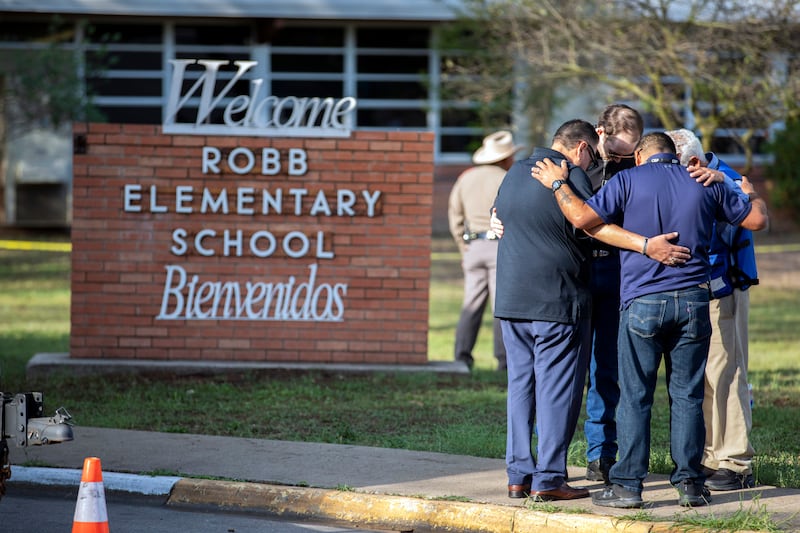Within a couple of hours of arriving in Uvalde in Texas in late May it was clear there were doubts about the official story regarding the murder of 19 children and two teachers in a local school.
It was about 36 hours after the attack on Robb Elementary School by an 18-year-old gunman, and media from around the world were descending on the area.
At a complex a couple of miles outside the town, a prayer service was scheduled to take place. As well as the locals, including relatives of some of the children who died, there were dozens of camera crews in the area that night and probably hundreds of journalists overall.
Earlier that day Texas governor Greg Abbott had said that law enforcement officers engaged the gunman to try to stop him but that he had gained access to a classroom through a back door.
READ MORE
But in Uvalde that evening there were the first whispers that things may not have been as straightforward. The original, official narrative that police had quickly arrived on the scene of the shooting, devised a plan, breached the classroom and killed the gunman, was false.
Over the next day or so journalists sensed there were inconsistencies in the story and that police were not fully answering questions. At a dramatic press conference in the street outside the school, authorities confirmed that some children had been trapped in a classroom with the gunman. They had phoned emergency services while armed police remained in the hallway outside for about an hour before finally breaking in and killing the gunman.
A damning report drawn up by a Texas House of Representatives committee earlier this week pointed to “systemic failures and egregiously poor decision-making” by those involved in responding to the attack.

From an Irish perspective, the report was remarkable. Firstly it was drawn up and released within seven weeks of the attack. Secondly, although readers of reports on various Irish scandals would be familiar with the finger being pointed at “systems failures”, what seemed extraordinary about the Texas report was that everyone was identified. There were no references to policeman “X” or “Y”. Those there on the day were named publicly.
Overall, 376 law enforcement officers from more than 20 different agencies, local and federal, responded to the attack in Uvalde and arrived on the scene in what the report described as “an atmosphere of chaos”.
There appeared to be confusion regarding basic command and control among those who responded to the incident — who exactly was in charge?
All of this has raised the question about the proliferation of police departments in the US.
At federal level there is the FBI, which operates across the country. However, there are also other organisations such as the Bureau of Alcohol, Tobacco and Firearms.
As of 2016 there were 15,322 general-purpose law enforcement agencies in the United States with an estimated 701,000 full-time sworn officers
At more local level, cities, towns, counties and even school districts — as was the case in Uvalde — have their own police forces. More than a quarter of school districts in Texas — 329 out of 1,022 — employ their own officers.
Some of the local police units across the country are extremely small; in Uvalde the school district police force has six officers.
Each police service has its own area of jurisdiction. In Uvalde the shooting began with a car crash on a road outside the school, which was the responsibility of local police. Once the gunman had jumped the fence and headed towards the classrooms, the incident came under the jurisdiction of the school district police force.
A US department of justice report showed that as of 2016 there were 15,322 general-purpose law enforcement agencies in the United States with an estimated 701,000 full-time sworn officers.
General-purpose law enforcement agencies include municipal, county and regional police departments; most sheriffs’ offices; and primary state and highway patrol agencies.
Local police departments made up 80 per cent of the overall number of general-purpose law enforcement agencies.
However, in 2016 about half of these local police departments employed fewer than 10 full-time sworn officers. Such local units probably provide a textbook definition of community policing in that it is carried out by people living among those they serve.
However, at a time of full employment and plentiful job opportunities across the country, such small police forces may not be viable in terms of staffing, training and equipping.
But rationalisation, as much as it may be merited or needed, is not likely be easy. Just as in Ireland, local communities may be reluctant to readily cede control over services based in their own areas.













